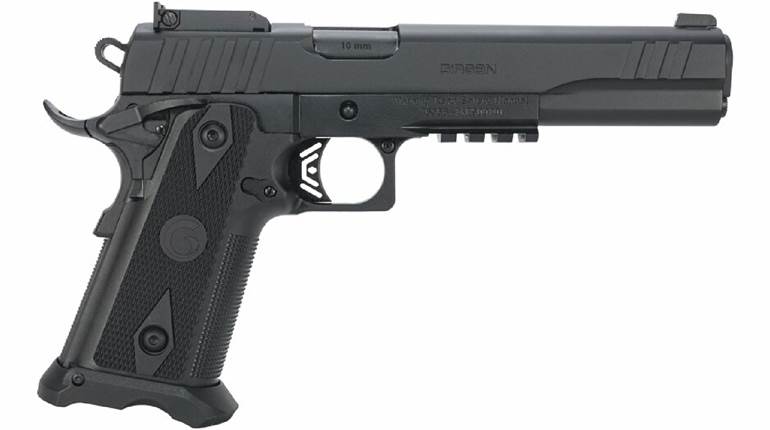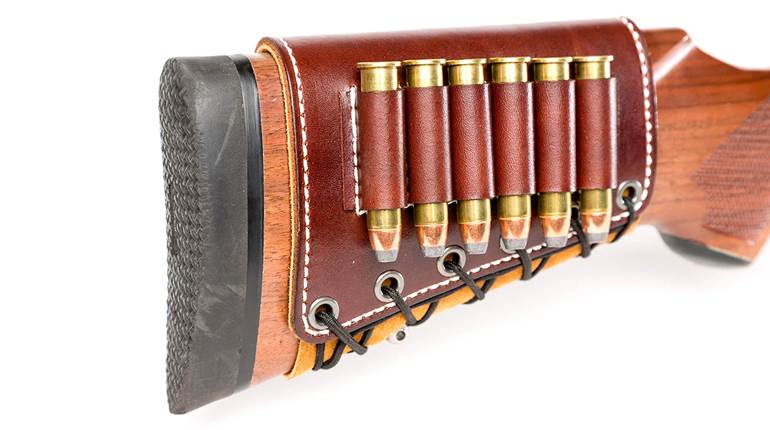
Few things are as discouraging to shooting enthusiasts ready for a good day at the range as having a gun repeatedly jammed up with failures to feed or eject when using the ammunition on hand. If the gun is in good working order and there's nothing obviously wrong with the ammunition itself, you may be dealing with a case of ammunition sensitivity. Although every type of firearm can suffer from some form of ammunition-related issue, a discussion of semi-automatic platforms is a good way to cover most of them.
Folks who are new to shooting or unfamiliar with ammunition issues often ask why they are running into problems with products that have a solid reputation for reliability. Trying to lump ammunition into "good" and "bad" categories just won't cut it. Instead, it’s more useful to say that sometimes the shoe just doesn't fit.
 Think about your foot for a moment. It sports exactly the same set of features as millions of feet around the world (toes, ball, arch, heel) but at the same time it has dimensions that make it both subtly and distinctively unique (nail thickness, toe shape, width, overall length). Once you know your shoe size, you can move up and down the price scale (from cheap to expensive) or sideways across shoe brands (Adidas, Fila, Converse, Nike, etc.) until you find a shoe that fits your foot and your budget comfortably.
Think about your foot for a moment. It sports exactly the same set of features as millions of feet around the world (toes, ball, arch, heel) but at the same time it has dimensions that make it both subtly and distinctively unique (nail thickness, toe shape, width, overall length). Once you know your shoe size, you can move up and down the price scale (from cheap to expensive) or sideways across shoe brands (Adidas, Fila, Converse, Nike, etc.) until you find a shoe that fits your foot and your budget comfortably.
Guns aren't much different when it comes to pairing them with reliable ammunition. Each individual gun has minute dimensional differences when compared to the same models that came off the same assembly line, let alone the much more distinctive differences that show up when making comparisons across makes, models and brands.
It's not always a matter of price point but of proper gun-to-cartridge fit. As you move up and down the ammunition price scale, and sideways across ammunition brands, you'll find loads that fit (run reliably) and those that don't. The only way to know which loads will work for sure is to "try them on" by firing them at the shooting range. You'll find a variety of inexpensive loads that run all day long without a hitch, and premium loads that will too. But like shoes, not every single option on the shelf is going to be a good fit.
Here are a few of the most common ammunition fit issues that tend to crop up:
Bullet Shape
Within any given caliber option you'll often find several different bullet weights and styles including lead round nose, flat nose, ballistic tips and jacketed hollow points, just to name a few. Depending on the depth and angle of the pistol's feed ramp or magazine follower, the tip of the bullet may catch at the chamber mouth resulting in a failure to feed.

Cartridge Case Material Cartridge casings are often referred to as "brass" because that has been a common case material for quite some time. However, cartridge cases can be made of brass, steel, aluminum or mixed materials. The Shell Shock Technologies NAS3 9 mm case consists of an aluminum head, stainless steel cylinder and a nickel coating. Some companies are even developing polymer cases. Within a particular category you'll see different treatments of the metal, like the 7.62x54 mm R rifle cartridges shown here, with steel cases featuring copper-washed, polymer-coated, lacquered and zinc-plated finishes.
Cartridge casings are often referred to as "brass" because that has been a common case material for quite some time. However, cartridge cases can be made of brass, steel, aluminum or mixed materials. The Shell Shock Technologies NAS3 9 mm case consists of an aluminum head, stainless steel cylinder and a nickel coating. Some companies are even developing polymer cases. Within a particular category you'll see different treatments of the metal, like the 7.62x54 mm R rifle cartridges shown here, with steel cases featuring copper-washed, polymer-coated, lacquered and zinc-plated finishes.
When a cartridge is fired, the relatively soft cartridge case is subjected to intense levels of heat and pressure, which temporarily cause it to stretch and expand before snapping back into something close to its original size and shape. In some instances, depending on the gun's chamber and the cartridge case material, the case's shape is altered just enough to cause it to stick in the chamber so it does not eject properly.

Some empty cases will pop out when the bolt is cycled a couple of times, while others will have to be tapped out with a cleaning rod and hammer. And there's no way to know for certain beforehand which case materials are going to be reliable. I've shot guns where brass-case loads cycled smoothly while steel-case rounds tended to be sticky. However, when I tested a Mosin-Nagant M44 a while back, the gun was perfectly happy when stoked with steel-cased ammo, but brass cases were the problem children of the test.
Low Pressure Levels
Semi-automatic firearms rely on the pressure generated by cartridge ignition to cycle the action. Due to design differences, including slide or bolt mass and spring-tension levels, some semi-automatics require more cartridge pressure to cycle successfully than others. If a given cartridge does not generate enough pressure to completely cycle the action of a particular gun, then malfunctions will occur including stove pipes (partial case ejection) and failures to feed. The most dangerous result of low pressure is a squib load (named after the strange sound they make) which results in the bullet becoming lodged in the barrel. Pay attention to each shot and make sure a hole appears in the target down range. If not, stop shooting, break down the pistol and inspect the bore before continuing to shoot.

Minute Differences in Cartridge Dimensions
Even though ammunition manufacturers work to meet clearly defined cartridge dimensions, there are always minute differences in the finished cartridges that just can't be detected with the naked eye. This is not only true across brands, but within batches of ammunition made on the same machines during the same shift. With low quality ammunition these variations show up in the form of poor accuracy, reduced reliability and variations in pressure levels. With good and high quality ammunition, the variations are so minute that they go undetected for hundreds, even thousands of rounds.

However, dimensional differences can cause a gun to run poorly with a certain load or even an entire brand. Case in point: My brother and I each own the same discontinued model of Smith & Wesson semi-automatic .22 LR pistol. His has an aluminum frame while mine is stainless steel, otherwise they are the same gun. My pistol hums right along with Federal bulk-box loads while his pistol is a fan of Winchester Wildcats. We switched up these loads during a family plinking session one time and both guns immediately began to jam up. Trading out magazines didn't help. When we went back to our own loads, they both ran smoothly again. There is nothing wrong with the guns or the ammunition, they are just not a good fit for each other.
If one or more of the aforementioned issues are the reason your gun and a particular load of ammunition just won’t function reliably, there is one simple solution: Stop using that ammunition and buy something else.
That being said, folks can run into failures to feed or eject that are not ammunition related. Here are a few additional troubleshooting steps to consider if your gun is being a finicky eater:
Clean, Inspect and Lubricate
I almost always start here when diagnosing a gun issue because the process of stripping, cleaning, inspecting and lubricating a gun is easy, inexpensive and, more often than not, the solution to the problem. This is especially true if the gun was running smoothly with a particular load and then "suddenly" started to exhibit issues. All too often those failures show up when the gun is dirty, gummed up with waxy rimfire debris or the lubricant has been burned off.
Break-In Period for New Guns
Although it's not as common as it used to be, there are still some factory-fresh guns that need to be broken in at the range before they can be counted on to run reliably. A tightly fitted all-steel pistol, like a competition-grade 1911, might need to be fired between 50 to 200 times to complete the final smoothing and settling of the moving parts. If the pistol has more than 200 rounds through it then the problem rests elsewhere.
Inspect Magazines and Magazine Springs
Whether a magazine is fixed or removable, tubular or box shaped, a weak spring can cause failures to feed. Replacing or upgrading the springs may solve the problem. If a magazine's feed lips are bent or damaged, that will cause hang-ups as well. If cheap, no-name magazines or well-made aftermarket magazines do not feed as reliably in your gun as factory magazines, you'll just have to bite the bullet and pay more.
Check Your Technique
While shooting technique can affect accuracy and comfort levels (recoil management) it can also affect reliable operation with semi-automatic pistols. Not holding the pistol firmly enough during recoil, which is also known as "limp wristing," can cause the pistol to malfunction. So, try firming up your hold on the gun and see if that helps.
Seek out Professional Assistance
Remember that safety is of the utmost importance any time a gun starts malfunctioning. If it is persistently misbehaving during a range session and you're just not sure what is going on, stop shooting the gun immediately. Unload it completely, case it up and do not fire it again until you call on a professional for assistance. This could mean calling the manufacturer and returning it to the factory for repairs, or paying a visit to your friendly neighborhood gunsmith. You might have a lemon on your hands, or it may be that the gun needs a simple repair. Either way, it's always better to address the problem directly and safely rather than taking any chances.






































